In our last Short Story, we perused children’s books by great designers donated by the Kean sisters. This month, staying in the theme of sibling charity, we profile another Hewitt who, in his own way, made a substantial contribution to Cooper Hewitt: Erskine Hewitt! In managing his family’s estates, particularly those of his sisters Sarah and Eleanor, he bequeathed to the museum some of its most treasured collection objects.
Margery Masinter, Trustee, Cooper Hewitt, Smithsonian Design Museum
Sue Shutte, Historian at Ringwood Manor
Matthew Kennedy, Publishing Associate, Cooper Hewitt, Smithsonian Design Museum
A Man of Worth
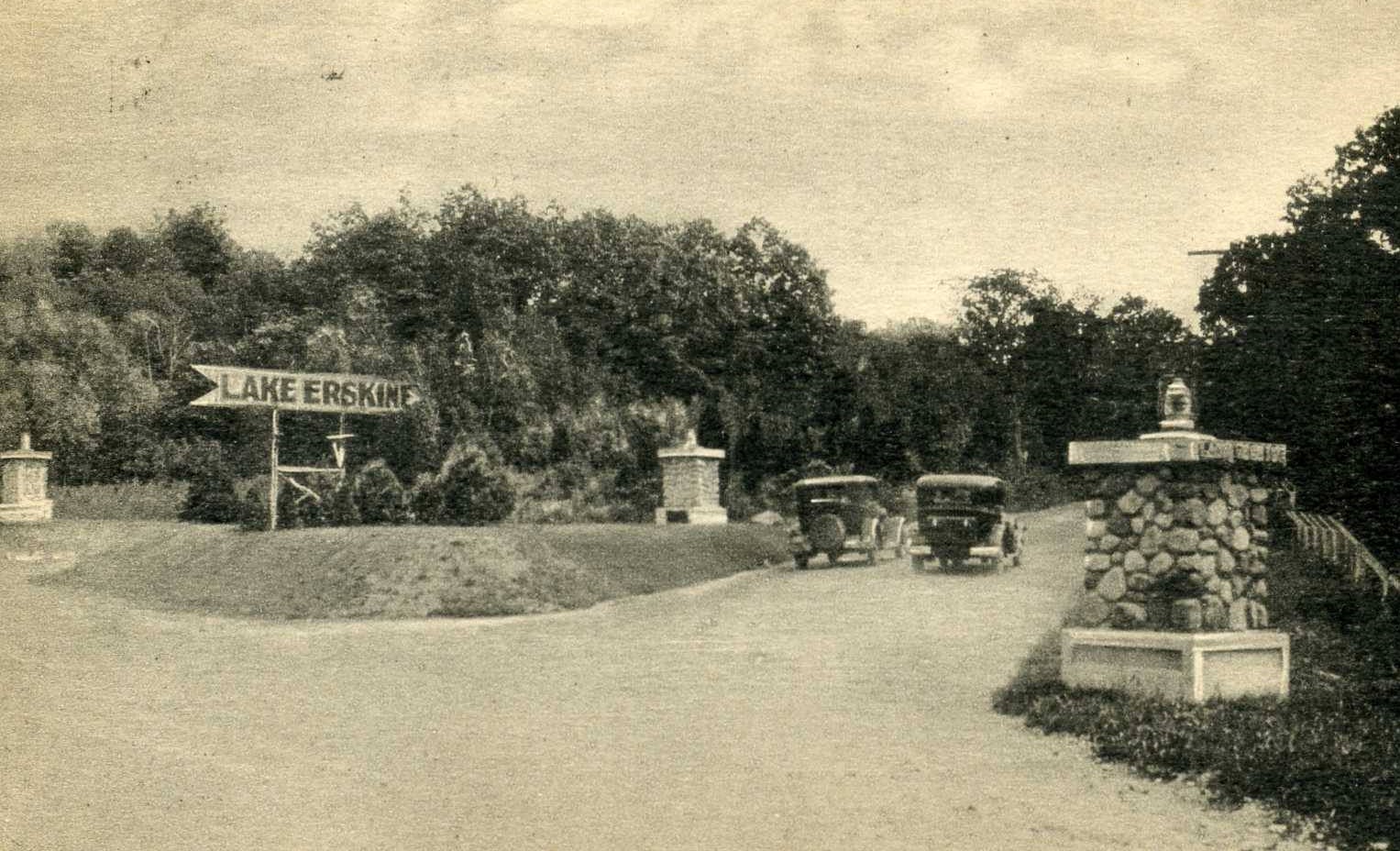
Lake Erskine entrance.
The life of Erskine Hewitt (1871–1938) is an interesting story. Grandson of industrialist and philanthropist Peter Cooper, son of Congressman and New York City Mayor Abram Hewitt, and youngest brother of Sarah and Eleanor Hewitt, he “devoted himself chiefly to the public service and the interests of the family estate.” His bequest of over 12,000 objects enriched the collections of the Cooper Union Museum for the Arts of Decoration (now Cooper Hewitt, Smithsonian Design Museum). Born into considerable wealth, shy and unpretentious, unmarried like Sarah and Eleanor, he was called “a bore” and called himself “the black sheep of the family.” Why?! He was a man of intelligence and enterprise, and his commitment to the Cooper and Hewitt families contributed greatly to preserving the record of their legacies and achievements.
Let’s start from the beginning.
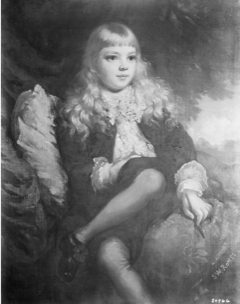
Erskine Hewitt portrait as a child by S.W. Rowse, ca. 1875.
Erskine was named after the Revolutionary War General Robert Erskine, whose tombstone is on the historic property of the Hewitt family country home in New Jersey, Ringwood Manor. With three older sisters and two brothers, his childhood was dynamic and privileged. The Cooper Hewitt blog series Meet the Hewitts tells the story of the Cooper-Hewitt family.
He graduated from Princeton University in 1891, cum laude with special honors in political science and law, and earned a master’s degree from Princeton in 1893. Princeton’s Seeley G. Mudd Manuscript Library contains comments and stories about his life and accomplishments in Class of 1891 books from 1891 through 1931. Forty years in his words!

(left) The Nassau Herald, 1891; (right) Erskine’s graduation photograph from yearbook.
His Princeton graduation yearbook states that he was 6 feet tall, weighed 160 pounds, was Episcopalian and a Democrat, and was called “Erk.” He was an athlete, distinguishing himself in racquet sports and ice hockey, a club man, and an amateur photographer.
The Mudd Library has a collection of photographs taken by Erskine on the Princeton campus. The newly invented Kodak box camera, with its ability to take still photos easily, must have fascinated him given that his grandfather and two older brothers were inventors.

Photographs by Hewitt, ca. 1891, Historical Photograph Collection, Student Photographer Series, Seeley G. Mudd Manuscript Library, Princeton University.

(left) Kodak camera, 1889, National Museum of American History. The box camera was pre-loaded with a one-hundred-exposure role of film. After all the photos were taken, the camera was mailed back to Kodak, and the prints and the camera loaded with a new roll of film were returned to the owner. (left) Kodak patent for new box camera 1888.
Erskine graduated from New York Law School in 1893, but practiced only briefly after receiving his degree. He volunteered to serve in the Spanish-American War and earned the rank of Captain while serving on General James H. Wilson’s staff in Puerto Rico. In his 40th reunion yearbook, Erskine included a letter from General Wilson to his father Abram: “He has been my constant companion, and has won my admiration and respect for his character, courage and courtesy, and for the modesty and intelligence with which he has behaved on all occasions. He is a man of real worth . . .”
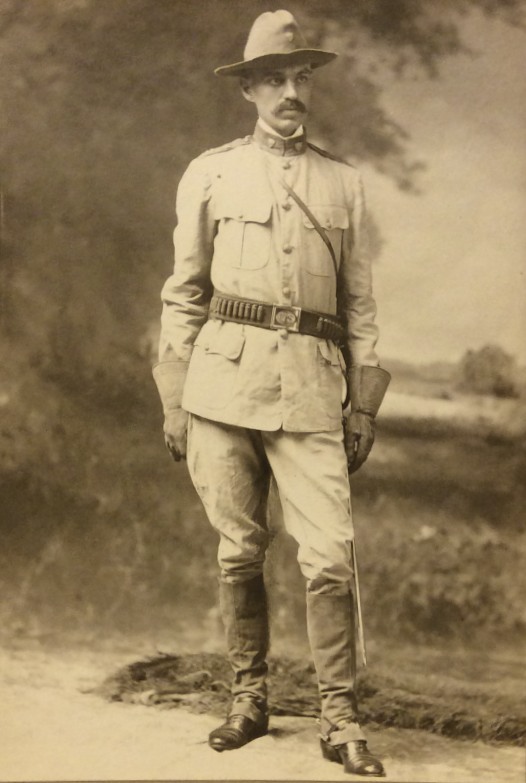
Erskine in uniform.
He was honorably discharged in 1898 and then joined the Cooper & Hewitt Company, a steel manufacturing company headed by his father. After it merged into the United States Steel Corporation, he pursued interests in business and real estate. His yearbook entries state he was “a steady bachelor and good club man” and has “learned how to enjoy life and friends.” Memberships in social and sporting clubs filled his leisure time.
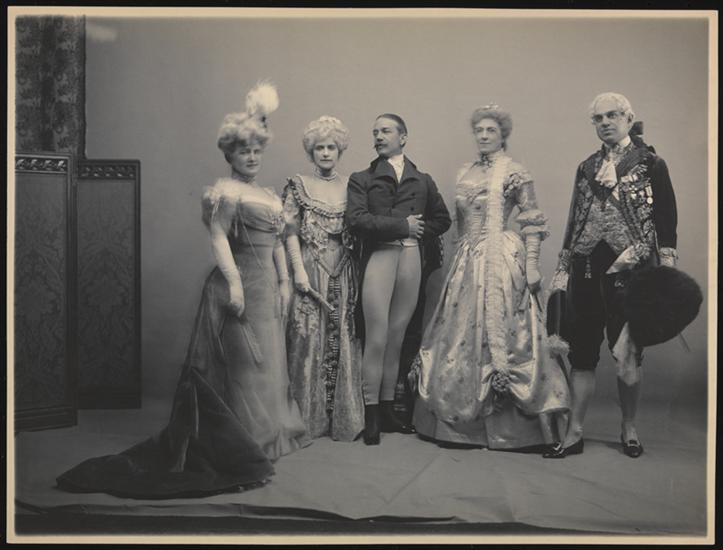
The James Hazen Hyde Ball, 1905. Group portrait with guests in French 18th-century costume. Erskine is at far right and his brother Peter Cooper Hewitt is in the center. Collection of the Museum of the City of New York.
Erskine served on prominent corporate boards and was president of various real estate enterprises, including the Ringwood Company and Hewitt Realty Company. On the Cooper & Hewitt Company’s 20,000 acres in the area near Ringwood, he developed several residential communities featuring small log cabins and cottages built as summer residences. Erskine’s summer home on Cupsaw Lake in New Jersey was called “Erks Den.”
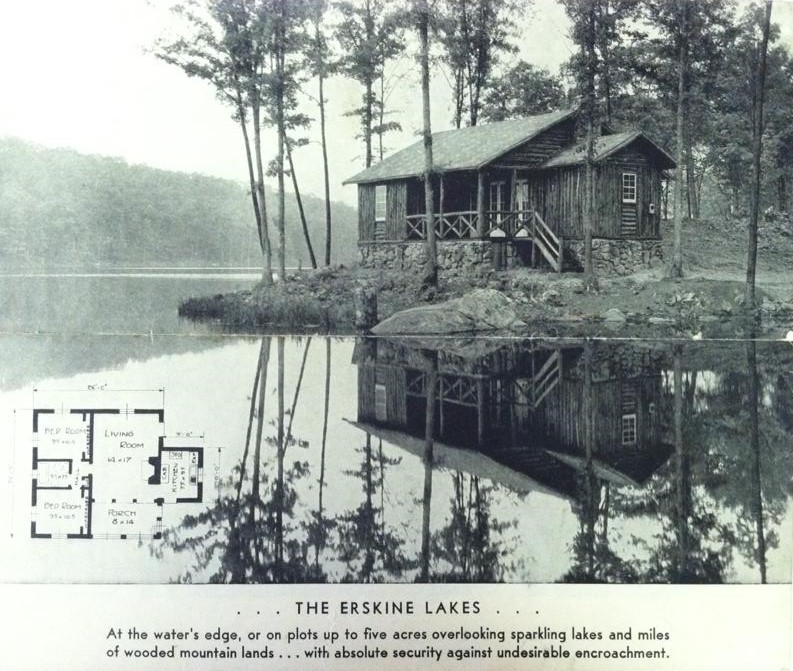
Erskine Lakes, log cabin and layout.
Erskine’s collecting interests focused on objects of early Americana, and he became known as a passionate collector and connoisseur. Over forty years, he built an extensive collection of important miniatures, paintings and drawings, furniture, and other decorative arts objects, which he freely lent to museums in New York. His notable collection was auctioned by Parke Bernet in several sessions after his death in 1938.
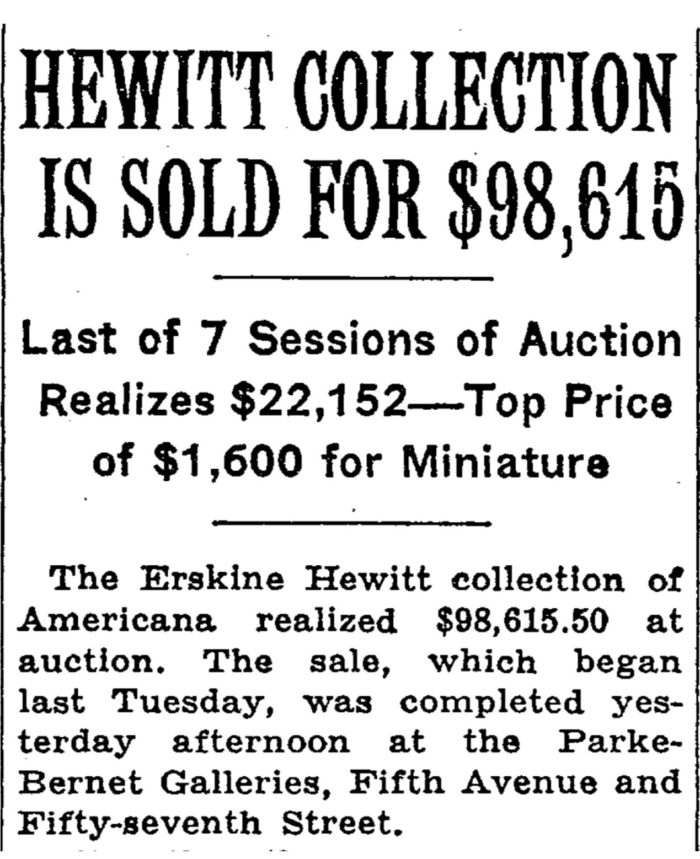
New York Times, October 23, 1938
Upon Sarah’s death in 1930, her will gave Erskine a major share of her estate, as well as responsibility for carrying out her wishes with regard to gifts she wished to go to the Cooper Union Museum. These were objects located within the family home at 9 Lexington Avenue. It should be noted here that Sarah and Eleanor had an idea of creating a “Family Museum,” but this project was never realized. Designated as “The 1931 Musgrave List,” it included eighty boxes and packages containing multiple objects of jewelry, textiles, decorative objects, drawings, and prints—even a Louis XV horse bridle made by Hermès. Below is a page of Sarah’s notes which reflect her exacting personality.
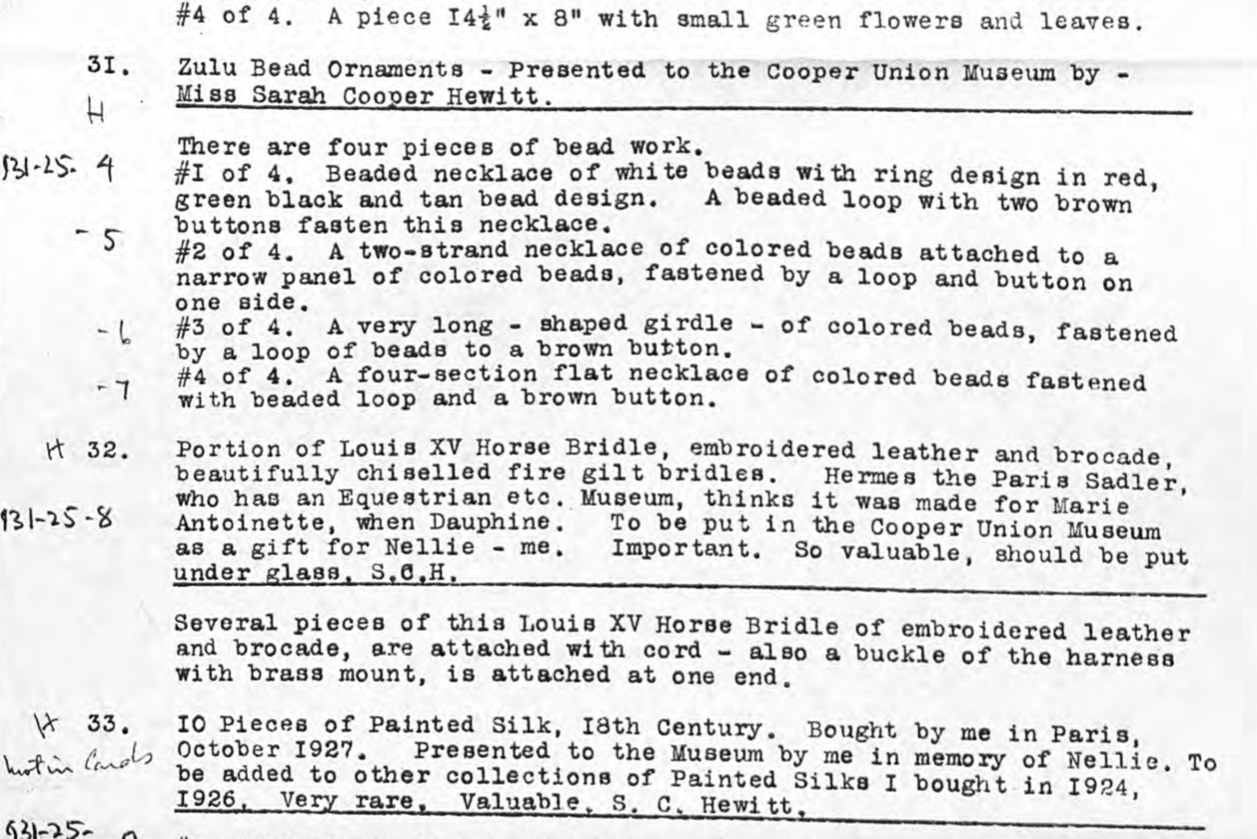
Page from “The Musgrave List.”
The Cooper Hewitt Registrar’s file on Erskine Hewitt contains letters of appreciation for the “splendid support [he had] given the Museum over the entire period of its Existence.” These notes and letters attest to his devotion to his sisters and his “unfailing interest and valuable gifts” until his death in 1938.
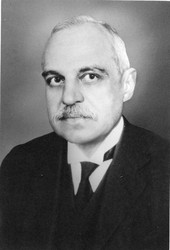
Erskine Hewitt, in later years.
In 1936, Erskine donated Ringwood Manor, its contents, and the surrounding property to the state of New Jersey, as a museum and a state park. With original historical structures, gardens, and landscapes on 582 acres, the Ringwood Manor museum and park are now visited and enjoyed by thousands of people all year round.
Erskine also donated property in the town of Ringwood for a large elementary school to be named after his sister. The Eleanor G. Hewitt School is still in operation today.
Pursuing his sense of responsibility to the family, he preserved historical material including correspondence and published writings documenting the lives and work of Peter Cooper, Abram Hewitt, and their families. These papers are now located in the Cooper Union Library, Cooper-Hewitt Papers, Bequest of Erskine Hewitt, 1938.
Erskine’s will literally “cleaned out” the family home at 9 Lexington Avenue. In great detail, he described the rooms where all the portraits, drawings, furniture, and china were located and then slated to go to the Museum. Over 12,000 objects were in the Erskine Hewitt Bequests of 1938 and 1942 (highlights pictured below). Other contents of the house were auctioned by Parke Bernet, and the house was demolished in 1939.
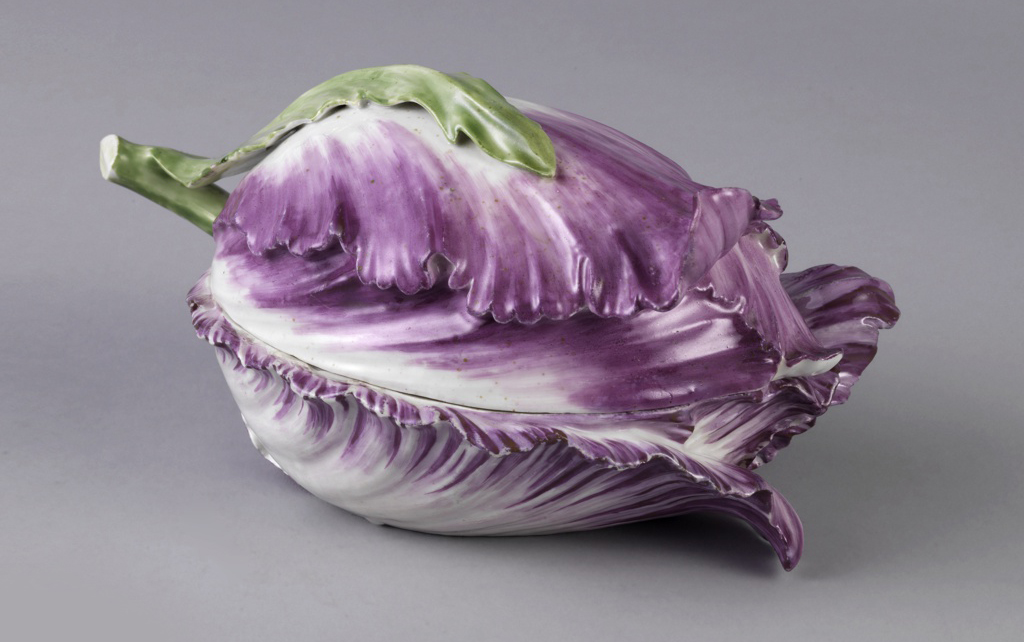
Tulip Dish and Lid, 1760–90; Probably Volkstedt (Principality of Rudolstadt, Thuringia, Germany); Painted and glazed hard-paste porcelain; H x W x D: 11 x 11.6 x 19.2 cm (4 5/16 x 4 9/16 x 7 9/16 in.); Bequest of Erskine Hewitt, 1938-57-550-a,b; Photo by Ellen McDermott © Smithsonian Institution
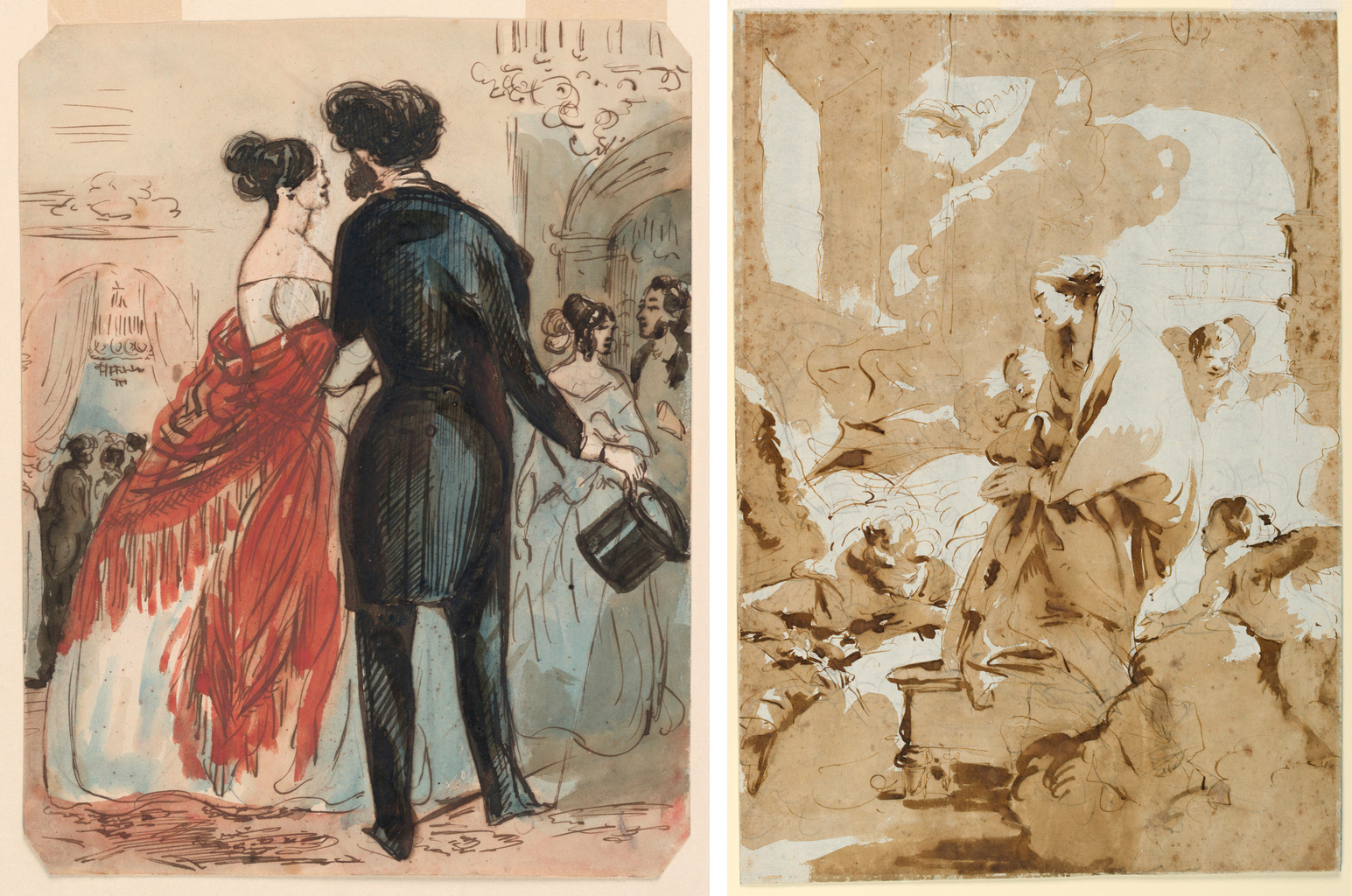
(left) Drawing, Arriving at the Hall, ca. 1860; Designed by Constantin Guys (French, 1802–1892); Pen and brown ink, brush and watercolor on paper; H x W: 24.9 × 19.4 cm (9 13/16 × 7 5/8 in.); Bequest of Erskine Hewitt, 1938-57-107; Photo © Smithsonian Institution; (right) Drawing, The Annunciation, ca. 1732; Giovanni-Battista Tiepolo (Italian, 1692–1770); Pen and brown ink, brush and brown wash over black chalk on off-white laid paper; 40.8 x 28.7 cm (16 1/8 x 11 1/4 in.); Bequest of Erskine Hewitt, 1938-57-228; Photo © Smithsonian Institution

(left) Roundel (China), 19th century; Silk and metallic embroidery on silk foundation, paper backing; Diam.: 22.2 cm (8 3/4 in.); Bequest of Erskine Hewitt, 1938-57-1629; Photo © Smithsonian Institution; (right) Figure Of A Dog (Germany), 18th century; Made by Meissen Porcelain Factory (Meissen, Saxony, Germany); Enameled porcelain; H x W x D: 20 x 28 x 11.4 cm (7 7/8 in. x 11 in. x 4 1/2 in.); Bequest of Erskine Hewitt, 1938-57-560; Photo by Ellen McDermott © Smithsonian Institution
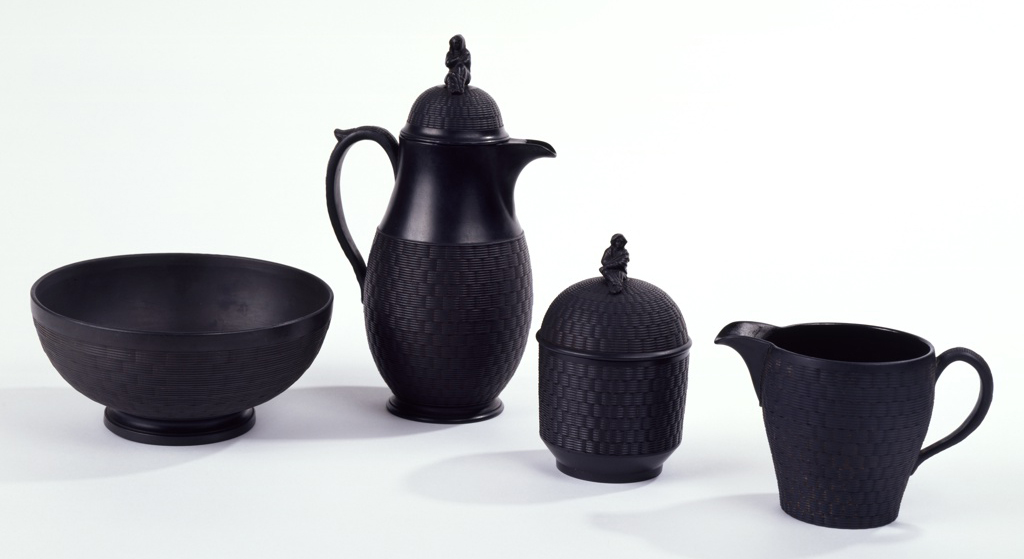
Bowl, chocolate pot, sugar bowl, and creamer, late 18th century; Made by Wedgwood (Staffordshire, England); Moulded and thrown unglazed stoneware (black basalt), encaustic silver decoration; Bequest of Erskine Hewitt, 1938-57-306-a,b
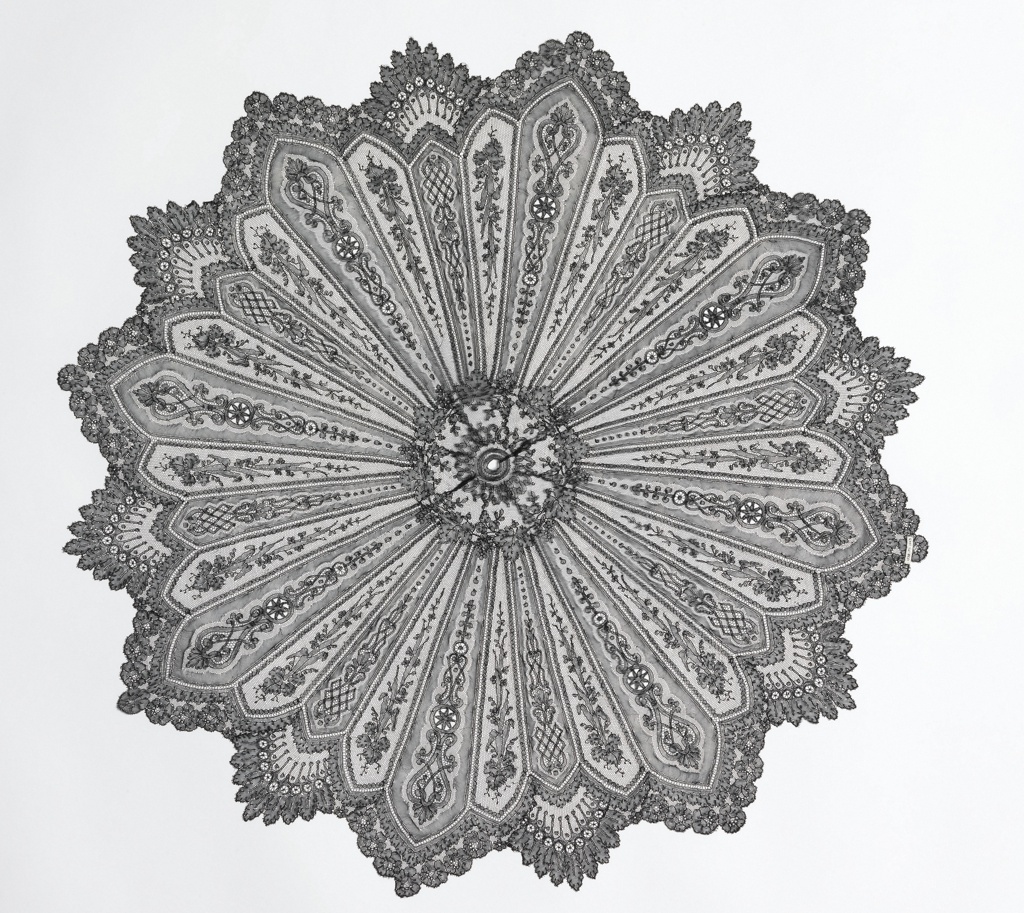
Parasol Cover (France), ca. 1880; Silk; H x W: 70.2 x 70.2 cm (27 5/8 x 27 5/8 in.); Bequest of Erskine Hewitt, 1938-57-1463; Photo by Matt Flynn © Smithsonian Institution
He accomplished his mission, being “the conservator and augmenter of the family estate and properties.” He was, indeed, a “man of real worth.”
Sources
Seeley G. Mudd Manuscript Library, Princeton University, New Jersey, https://rbsc.princeton.edu/mudd.
Ringwood Manor, Ringwood, New Jersey, www.ringwoodmanor.org.
Cooper Hewitt, Smithsonian Design Museum, cooperhewitt.org.
